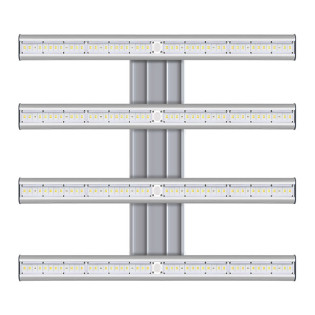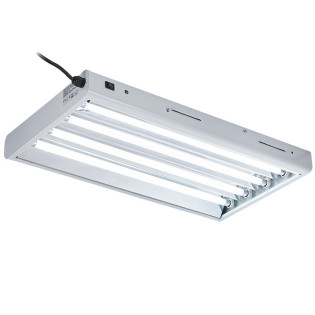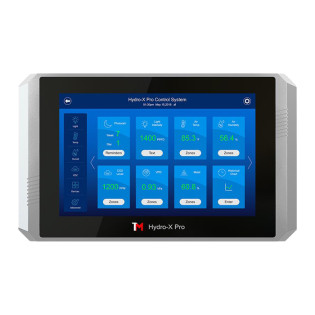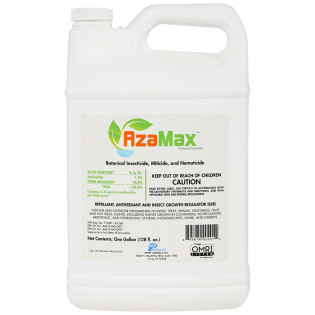
Greenhouse growing allows you to grow your favorite veggies or flowering plants during the colder months while protecting from outdoor conditions.
But this is just the tip of the iceberg in terms of reasons you should consider growing in a greenhouse!
This is the perfect medium between indoor growing and outdoor growing, and we are going to teach you everything you need to know about this style of gardening. That includes what greenhouse growing even is, along with why you should give it a try.
Then, we’re going to discuss which plants you can try and grow, and when you can plant them according to different climates.
After we share some general information on greenhouse growing, we’ll teach you how to build a greenhouse cheap.
We’ll conclude our guide by explaining some tips & tricks for taking plants from seed to harvest in one. We’ve got a lot to cover, so let’s dive right in!
What Is Greenhouse Growing?
Greenhouse growing can be seen as a hybrid between indoor and outdoor growing. It is a nice balance, offering many benefits to give you the best of both worlds.
You may already be familiar with what a greenhouse is, but let’s quickly break it down into specific components for those who are new.
Types Of Greenhouses
A greenhouse is a building composed of windows and a frame, which allows sunlight to enter through. This sunlight provides light energy to your plants, but also heat - known as the greenhouse effect.
There are two main types of greenhouses seen today in horticulture - attached (sometimes referred to as lean-to-greenhouses) and freestanding.
If you don’t have a ton of space or bandwidth to build a greenhouse, you may consider the lean-to style. This is where you set it up next to an existing exterior wall on your house, garage, or a shed.
It allows you to build one less wall, and use a more sturdy, weight-bearing wall. This also saves you money and time in terms of building the structure.
A freestanding greenhouse, on the other hand, grants you more freedom in terms of placement, size, etc., but of course requires more work and investment on your part.
Let’s help you better understand the differences between greenhouse growing, indoor growing, and outdoor growing.
Indoor vs Outdoor vs Greenhouse Flower

There are great reasons to grow indoors, but outdoor growing has plenty of benefits of its own. When you grow indoors, you have complete control over the environment. This means not just the lighting, but air circulation, temperature, humidity, etc. You also have lower risks when it comes to pests and diseases.
When growing outdoors, you do lose some of these benefits. But your workload as a grower is greatly cut down, since you are letting mother nature take the reins. You get free sunlight and airflow all day, cutting costs significantly!
So, it stands to reason that greenhouse growing can be advantageous by combining the ease and cost effectiveness of outdoor growing, with the control of putting your plants inside a building.
In some greenhouses, you’ll still need supplemental lighting, fans to circulate air, and ventilation systems. We’ll cover this more in depth when we explain how to build a greenhouse.
We have complete guides on both indoor growing and outdoor growing if you are interested in learning more about either of these topics. But now, we’re going to move onto some of the specific benefits you’ll unlock by building a greenhouse.
Why You Should Consider Greenhouse Growing
We’ve already briefly touched on the main benefits of greenhouse growing, but let’s talk specifics. For one, you get to extend the growing season, sometimes growing year round.
At the very least, though, you can get an earlier start sprouting plants before moving them outdoors.
How Early Can You Plant In A Greenhouse?

Many decide to build a greenhouse based on the fact that you can start planting in February rather than April. But, how early you can plant in a greenhouse is going to vary across the world for different growers depending on hardiness zone.
The hardiness zone dictates what plants you can grow and at what time of the year, taking into account harsh weather conditions, such as frost. As you may imagine, Scottsdale, Arizona is a different hardiness zone than Fargo, North Dakota.
So if you are going to grow outdoors OR in a greenhouse, you need to start by learning what your hardiness zone is.
However, you can start seeds or small plants from certain varieties in your unheated greenhouse as early as 3-4 weeks before your last frost date. If historically your last frost is mid-February, you can start plants in early-January.
However, some plants will still struggle with temperatures inside a greenhouse, so know your varieties and plant accordingly!
There are things you can do to improve conditions in your greenhouse during the winter and make them more conducive to growing plants. For example, you can add a greenhouse heater to increase temperatures.
You may also consider adding some grow lighting, as these will increase heat in the greenhouse while also increasing the light energy your plants get.
Do Plants Grow Better In A Greenhouse?
Some people use the analogy, “A grower without a greenhouse is like a cook without a stove.” To many growers, you can’t beat greenhouse growing.
To understand why, we need to look into the science behind how plants grow in a greenhouse. The windows in most translucent style greenhouses amplify any light energy that passes through, giving your plants more to work with.
A secondary reaction of this is the ample supply of carbon dioxide in a greenhouse. This is because, like indoor grows, the water your plants transpire just turns into humidity in the environment.
As long as you are watering your plants properly and making sure humidity isn’t too high, this is a good thing! Your plants will love the slightly humid environment.
We already touched on the benefits of keeping plants warmer and starting earlier in the year, but wanted to retouch on that because it also contributes to why plants grow better in a greenhouse.
One final reason we think greenhouse growing is so great is the protection this structure provides from harsh outdoor growing conditions - these include severe winds, rain/thunderstorms, and of course, pests and diseases.
Sure, some bugs and mold spores could still make their way into your greenhouse. But it’s less likely, and should it happen, we have pest-control guides and pest-control products to help you remedy the situation!
What Can You Grow In A Greenhouse For Beginners?

Just about anything you can grow outdoors can be grown in a greenhouse, and will perhaps grow better!
However, there are some varieties that are a better choice for beginners looking for a recommendation. Here is a long list of options you may consider, but are not limited to:
- Carrots
- Onions
- Asparagus
- Spinach
- Eggplants
- Turnip
- Kale
- Okra
- Zucchini
- Microgreens
- Salad greens
- Tomatoes
- Strawberries
- Peppers
- Raspberries
- Cucumbers
- Cherries
- Grapes
- Cantaloupe
- Chilies
- Lemons
- Mint
- Cilantro
- Sage
- Thyme
- Tarragon
- Catnip
- Laurel
- Anise
- Rosemary
- Cumin
- Lavender
- Lillies
- Marigold
- Sunflowers
- Nigella
- Daisies
- Morning Glories
These are some popular plants you can grow in a greenhouse as a beginner, but any veggie or flowering plant can really be grown in one.
Just be sure to do your due diligence into whether the plant you want to grow does well in a greenhouse, and when to plant it.
Take your hardiness zone into consideration! In the meantime, we are going to move on and teach you how to build a greenhouse cheap (DIY).
How To Build A Greenhouse Cheap
Learning how to build a greenhouse cheap all by yourself will save you tons of money while still setting up an awesome structure to grow plants in.
If you want to save money and truly do it yourself, it’s important to note that you may not be able to build the greenhouse of your dreams.
You may have to use translucent tarps or plexiglass rather than glass windows.
This will cut down on the light energy that can penetrate the structure and feed your plants, so you may need to invest in some supplemental grow lighting. Of course, building your greenhouse starts with planning it out.
Start By Planning Your Greenhouse Build
There’s a lot to consider in terms of planning the location, size, and materials used to build your greenhouse. You may only have so much space to work with, and thus, need to build a small greenhouse.
You also need to pay attention to the sun and how it moves across where you’re planning to put your greenhouse. If your plants don’t get enough hours of sunlight per day, you’ll definitely need some grow lights.
Once you know where you’re going to build your greenhouse, it’s a matter of determining the dimensions of your structure.
You need to factor in the space in the greenhouse, and how easily you'll be able to move around in there with benches, raised beds, or pots scattered around.
You also need to consider access to water or electricity. Your greenhouse will likely need some lighting, fans, and other equipment, so ensure an outlet or two are nearby. Then, consider how you are going to water your plants.
Give yourself as much space as possible, and don’t be disappointed if you come to realize you’re only going to build a small greenhouse. You’re still going to grow some awesome plants! Let’s move onto choosing materials.
What Materials Should You Build A Greenhouse With?

Start by figuring out doors and hardware. Just one entry/exit way is fine for small greenhouses, but if you are looking to build a large, commercial greenhouse, you may want to consider multiple entries and exits.
You can use any kind of door, you aren’t limited to one with hinges that swings open. You can even have a roll up door if you so choose!
Then, ensure the nuts, bolts, and frame you go with are strong enough to withstand not just the test of time, but harsh weather, humid, warm conditions inside the greenhouse, etc.
The covering of your greenhouse is the most important part, however. This will make or break how well your plants grow, because it affects how much light energy is able to get through.
You have tons of options here. You can use panes of glass or plastic, or a translucent tarp covering that goes all the way over your structure.
This won’t allow quite as much light through as some of the other options, but it will be substantially cheaper, easier, and safer.
How To Install A Greenhouse - DIY vs Professional Installation
The final step once you’ve planned out the space and size of your greenhouse, and found which materials you are going to build it with, is putting everything together. You have two options here - do it yourself, or have a professional team install your structure.
Obviously, this is going to be a decision based on how serious you are about getting the job done right, how much capital you are willing to invest in your garden, the size of your greenhouse, etc. - lot’s of factors to consider.
We recommend getting this done professionally if you are building a freestanding greenhouse unless you have experience in this area.
If you are building a lean-to greenhouse, you can likely get the job done yourself with minimal hassle.
To give you an idea of what you can expect to pay no matter which method you opt for, building your own will run you up to $3,500 in supplies and equipment alone.
Getting it done professionally will be far more expensive, but for commercial growers, the cost is worth it. You can expect to pay between $5,000-$20,000. This varies depending on size, materials used, etc.
Cheap Greenhouse Building Plan (DIY)

If you decide you want to do the job yourself, you can try and follow this plan we’re about to layout.
It uses cheap materials, with no wood, nails, or power tools required! It’s simpler than you may think. The materials required are:
- Rebar
- Pipe Sections
- Irrigation Hose
- Rope
This is by no means a professional level greenhouse you’re going to build - but it will get the job done on a budget, and should last many growing seasons with no issue.
The plan claims to be able to withstand heavy winds and crazy weather. However, build at your own risk!
Start By Building The Greenhouse Structure
Start by cutting and piecing together the PVC pieces for the ground. For the 12’ x 20’ greenhouse plan we’re trying to build, you’ll need twelve 12” pieces. Then, measure and mark the ground where your pipes will go.
You can use stakes to outline the footprint of the greenhouse and just start piecing things together. Ensure your corners create a 90-degree angle.
After you have your greenhouse mapped out, you can install the in-ground pieces. You’ll put each pipe in the ground, spaced 4’ apart along the entire footprint. After that comes the rebar.
For this step, you need to cut six 16.5’ sections of irrigation pipe and insert each of your pieces of rebar into a section of irrigation pipe.
Then, you can install the rebar hoops. Carefully place each end of rebar into the installed PVC pipe in the ground. This may take 2 people, as the rebar is kind of heavy and tough to maneuver into the PVC. Then, support the rebar and allow it to curve across to the other side, and connect it there. The hard part is over!
Install The Bracing For High Winds
You still need to install bracing at the top to support the frame during high winds. This will require a permanent, strong stake 6’ from each end of the greenhouse.
You’ll attach the rope to one of these stakes, feed it along the length (top) of the greenhouse structure, and then tie it to the other stake at the other end. Tighten the brace, and then you can install your plastic covering.
Add Your Plastic Covering
The final step to take in order to build a greenhouse cheap is covering the frame with your plastic covering. In terms of which plastic is best for greenhouse growing, you have a few options.
But, we recommend a 4mil plastic, but you can use a 6mil plastic for a heavier, thicker plastic. The 4mil will hold up just as well, and allow more oxygen and light to pass through to your plants.
If you want to take things a step further and you have a bigger budget, opt for specialized greenhouse covering.
In terms of quantity and size, you’ll need a giant plastic roll measuring 20’ x 100’. This will give you plenty of extra wriggle room to stake into the ground or hold with rocks on each side of the greenhouse.
Simply drape it over your frame, and stake it down. To keep it from billowing up during high winds, you can also criss-cross rope across the top of the greenhouse to hold the plastic down.
This will, however, cut back on fresh air and ventilation capabilities. Nevertheless, it’s more important to ensure the greenhouse stays secure, so this is your choice.
Tips For Growing In This Cheap, DIY Greenhouse
Because this is a DIY greenhouse, don’t expect it to be perfect and maintain it’s efficacy permanently. It will require maintenance to keep the plastic secure, as it will come loose over time.
Also, keep in mind that this greenhouse won’t be as warm as a professionally built greenhouse. So, you won’t be able to start plants quite as early, or at least not the varieties that prefer warmer climates.
Everything You Need To Know About Greenhouse Growing
Now, let’s talk about some tips for greenhouse growing in general. We are going to share some advice for getting the best results possible with this style of gardening.
We’re going to start with some additional supplies and equipment you’ll need, depending on how serious of a greenhouse grower you are.
Supplemental Grow Lighting

Depending on how much light your plants are getting, and what the lighting requirements of your specific plants are, you will need supplemental grow lighting.
This is especially true if you are growing flowering plants, that require up to 18 hours of light a day. In this instance, grab some additional lighting. Here are the technologies you have at your disposal:
- Fluorescent T5 Lights - Low heat, low intensity, great for supplemental side lighting or plants with lower-lighting demands. Great for starting seeds or small plants, too.
- LED Lights - The most sophisticated form of greenhouse lighting is LED technology. If you look at the industry leaders in greenhouse growing, the majority opt for LED due to the low heat, efficiency, and optimized spectrum. If you are a commercial greenhouse grower for you, look no further than LED’s. If you are a hobbyist, these may be a bit out of your budget and tough to justify the expense.
- MH/HPS Lights - The most tried and true, inexpensive greenhouse lighting option is good old HID technology - metal halide (MH) or high pressure sodium (HPS). MH is best for leafy, robust, foliage growth, whereas HPS is best for budding or flowering growth. Sometimes, you’ll need both over the course of a plant's life.
- CMH Lights - The final option for greenhouse growing is CMH technology. This is pretty new and advanced too, and a great option for full-cycle growing. It puts out an intense, white light, but doesn’t produce as much heat as MH/HPS lights.
Want some recommendations? Check out our best LED grow lights or best HPS grow lights post. Or, reach out to our experts for our opinion. We’ll find the best light for you and your greenhouse.
Controlling The Greenhouse Environment

Another thing to consider is the environment in your greenhouse. Things you need to pay attention to are temperature, humidity, and air flow. All three of these are very important for plant growth.
If you let these metrics fall too low or extend too high, your plants won’t grow to their full potential.
And, the possibility for crop loss increases. From a safety standpoint, you really need to pay attention to temperature and humidity, especially with electrical components in your greenhouse (fire risk).
You can add in a ventilation exhaust system at one end of your greenhouse, and an intake at the other (or just leave the door open, and create a passive ventilation system). This will bring in fresh air, and draw air across your plants in the process.
From an air circulation standpoint, you’ll also want some additional fans in the greenhouse to allow your plants to dance.
The ventilation system will help maintain the ideal temperature. But, if you experience extreme high or low temperatures, you will need either an air conditioner or heater respectively.
Another thing you may want to consider is dehumidifiers. If you really struggle with excess humidity in the grow space, you need a way to remove this moisture. Otherwise, you run the risk of powdery mildew or other plant illnesses forming.
If you are growing flowering plants and you want to increase potency and yield, you can supplement the greenhouse
Learn everything there is to know about the growing environment in our complete guide. This is perhaps the most important part of growing indoors or in a greenhouse.
Automating The Greenhouse Environment

Keeping your greenhouse environment dialed in is no easy task. Luckily, technology has advanced to the point where you can automate the environment entirely.
Our complete guide, linked previously, will explain everything you need to know about this.
But, it's really as simple as using an environment controller. These can be as simple as a timer, or as sophisticated as a multi-function controller to manage temperature, ventilation, humidity, CO2, etc.
The right controller for you will depend on what exactly you want to control, along with how many devices you are looking to control. Here are some of the top brands you can find on our site:
- Trolmaster
- Autopilot
- Titan Controls
Feeding Your Plants (Fertilizer vs Liquid Nutrients)
Depending on what type of plants you are growing, you’ll need some form of fertilizer or plant nutrients. Certain plants really only need an all purpose fertilizer or some form or nutrient-dense soil.
However others, particularly flowering plants, will need more frequent feedings. This is where plant nutrients come in.
If you are new to growing in general, and have never fed plants before, start with our complete guide on plant nutrients & pH. We also have guides such as:
Our complete nutrient packages are the best way to get started growing in a greenhouse, because they provide a balanced nutrition to your plants.
These nutrients include the main NPK (nitrogen, phosphorus, potassium), along with micronutrients, and supplements to optimize certain areas of nutrition.
Monitoring Plant Problems In The Greenhouse
In terms of your daily responsibilities with greenhouse growing, you need to have a good understanding of different plant problems. Things you need to monitor include:
- Pest & Disease Damage
- Environmental Problems (covered in depth in our complete guide, linked above)
- Nutrient & pH Problems
What separates a novice grower from the best growers is the ability to quickly diagnose what the issue in your greenhouse is. And then, take swift action to remedy the problem.
This requires a good understanding of the specific plant you are growing. Experience through multiple growing cycles with the same plant varieties will help you with this.
Of course, pests and diseases are less likely in a greenhouse, but still possible. This means you need to learn all about the common pests & illnesses, and come up with a good IPM strategy to prevent and combat whatever issues arise.
Most of the nutrient problems you’ll come across are really not nutrient problems at all - rather, they are issues with pH.
If you don’t constantly test your pH before feeding, or at least test the runoff from your feedings, you’ll potentially be locking out certain nutrients.
This leads to what appears to be a nutrient deficiency, and can cause growers to start feeding more nutrientsI, when the problem is really just imbalance pH!
This is why it’s so important to have one of the best pH testers possible, and always test your nutrients prior to feeding.
Final Thoughts On Greenhouse Growing
Now, you know everything you need to know about greenhouse growing. It’s just a matter of determining how you are going to build your greenhouse - either professionally or as a DIY weekend project!
No matter how you build & design your greenhouse, we have the supplies and equipment you need to optimize your environment and provide the best growing experience possible for whatever plants you choose to grow.
We have the nutrients, harvest supplies, and more to get your plants from seed to harvest to. We even have the resources in our blog to help you get the job done right.
All you need to do know is take action, and get started! Happy growing!



















































